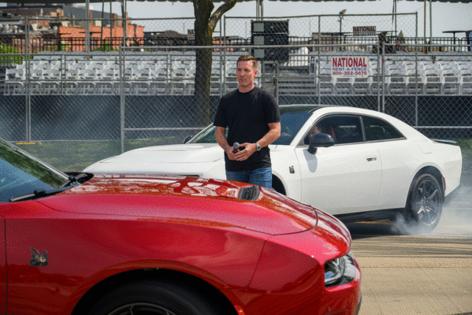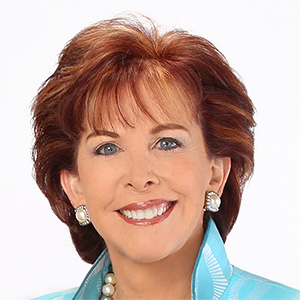More Hemis, higher tariffs: How Trump's policies are helping (and hurting) Dodge
Published in Business News
Under President Donald Trump, Dodge is turning back the clock on its muscle car lineup.
Instead of phasing out the final gas-guzzling Hemi V-8 engines still available on Durango SUVs this year, it’ll make them standard for 2026 — even on the entry-level GT trim. It’s soon launching potent six-cylinder Charger coupes and sedans amid rumors of a V-8 also under development for that model, which currently is available only with an electric powertrain.
The Stellantis NV brand, as it pivots hard back toward its big-engine, muscle-car roots, can thank the Trump administration and a GOP Congress: they have rushed to end automaker fuel economy fines and gut emissions rules that were meant to combat climate change and improve air quality.
Everything changed fairly suddenly for Dodge after the Republican president took office, CEO Matt McAlear said in an interview last week, and "that allowed us to go back to the drawing board and figure out, what is the next step? How do we give performance back to our customers?”
Yet Dodge, like other brands, has simultaneously been stung by Trump and his aggressive trade policies. Due to higher tariffs, the company has indefinitely postponed production of the Italian-made Hornet — a small crossover that the brand had hoped would finally start gaining sales traction with a reduced starting price after its debut in 2023.
“If the tariffs don’t change," McAlear said, "then there won’t be a ‘26 model year."
End of Hornet?
The brand pushed to import remaining 2025 Hornets before 27.5% auto tariffs on European imports kicked in this spring, he said, and 2026 production at the plant in Naples is on hold. There are fewer than 3,000 Hornets remaining on U.S. dealer lots, and he expects they will be sold down before the end of the year.
The CEO said Dodge had been plotting to grow sales of the Hornet just before tariffs kicked in, including by repositioning its starting price to roughly $30,000.
Now, dealers and analysts say they expect it's probably the end of the line for the sporty crossover, which comes in both gas and plug-in hybrid iterations and is a cousin of the Alfa Romeo Tonale. Hornet had initially been pitched as a performance-oriented alternative that would find its niche in the popular compact SUV market.
Dodge spokesperson Kristin Starnes said a recent U.S. deal with the European Union to lower tariffs to 15%, including on cars, hasn't changed Dodge's calculation on postponing Hornet production.
"It's a beautiful vehicle, but I don't know how the constraints with tariffs will ever make it viable for the American market," said Mike Bettenhausen, a Chrysler, Dodge, Jeep and Ram retailer in suburban Chicago who heads the automaker's national dealer council.
Losing the Hornet would take away one-third of Dodge's current model lineup. Last year, Dodge sold more than 20,500 of them, but sales fell sharply in the first half of this year.
Dealers said they won't be overly disappointed if the crossover does come to an end, despite its place in the highly popular compact SUV segment. It's faced frequent quality issues that have led to customer frustrations, recalls for issues with brake pedals and the rearview camera display, and a price point that retailers said was far too high. Some were forced to deeply discount their Hornets to drum up customer interest, ultimately losing money on a number of transactions.
“The Italians trying to sell Italian vehicles in the United States has just been a big miss, man," said Jim Walen, who sells Dodge, Jeep and other Stellantis brands in Seattle. "The market doesn’t want those.”
Dodge also faces elevated tariffs on its Charger Daytona EV and the forthcoming gas-powered Sixpack, produced at the Windsor Assembly Plant in Canada, but McAlear indicated no coming production changes there. The brand did earlier this year discontinue the entry-level Charger Daytona R/T, which is made at the plant, amid tariffs and slow sales that had led to significant discounting.
"They've been terrific in bringing the battery-electric technology (for Charger) and now they're shifting over to the Sixpack technology, and we're ramping that up quick," McAlear said of the plant, adding that all the variants of the Charger will be in production in Windsor by the second quarter of 2026.
Hemis galore
Dodge is pushing more Hemi V-8s into its Detroit-made Durango lineup, which is less impacted by tariffs than its other offerings, except on imported parts.
A 5.7-liter V-8 will even be available on the base GT trim, starting at under $45,000, including destination charge. The R/T trim will now come with a more powerful 392 Hemi V-8, meanwhile, which delivers 475 horsepower.
And after its expected demise in recent years due to tightening federal emissions regulations, the top-end SRT Hellcat will live on, offering a 6.2-liter Hemi V-8 with 710 horsepower, a 0-60 time of 3.5 seconds — and an estimated combined fuel economy of just 13 miles per gallon.
The last time the Durango got a full overhaul was 15 years ago; McAlear wouldn't say when the next generation is coming. But the three-row SUV remains a fairly popular and profitable offering for the company in recent years. Sales of more than 34,000 in the first half of 2025 were up 4% from last year.
Sam Abuelsamid, vice president of market research at auto communications firm Telemetry, said it's "only a matter of time" before Dodge announces a Hemi V-8 is also coming for the redesigned Charger. (When asked about the possibility, McAlear said there is "nothing that we've announced yet.")
Dodge released the battery-powered version of the Charger at the start of the year, but it hasn't resonated with the Dodge muscle car faithful, the analyst said, even with a system that pumps out sounds similar to a real V-8 engine. The company sold just 4,299 of them in the first half.
"A lot of that core audience doesn’t even care if the EV is any good, what kind of sounds it makes," Abuelsamid said. "They’re just not even interested in looking at it.”
Dodge's plan now to push out more high-powered gas engines should help win back some of its core customers turned off by the Charger EV, he said.
Kevin Farrish, a Stellantis dealer from Virginia, said it's exciting for him and other retailers that the "muscle is coming back" after the last generation of the popular Charger and Challenger gas-powered models ended production in 2023. He's confident four-door versions of the new gas-powered Charger will sell especially well. And Durango's new Hemi offerings are a key selling point for Dodge customers who often come into the showroom looking for high performance.
“Putting a Hemi in it raises the price," Farrish said. "But the enthusiast who wants that is willing to pay for it.”
©2025 www.detroitnews.com. Visit at detroitnews.com. Distributed by Tribune Content Agency, LLC.












Comments